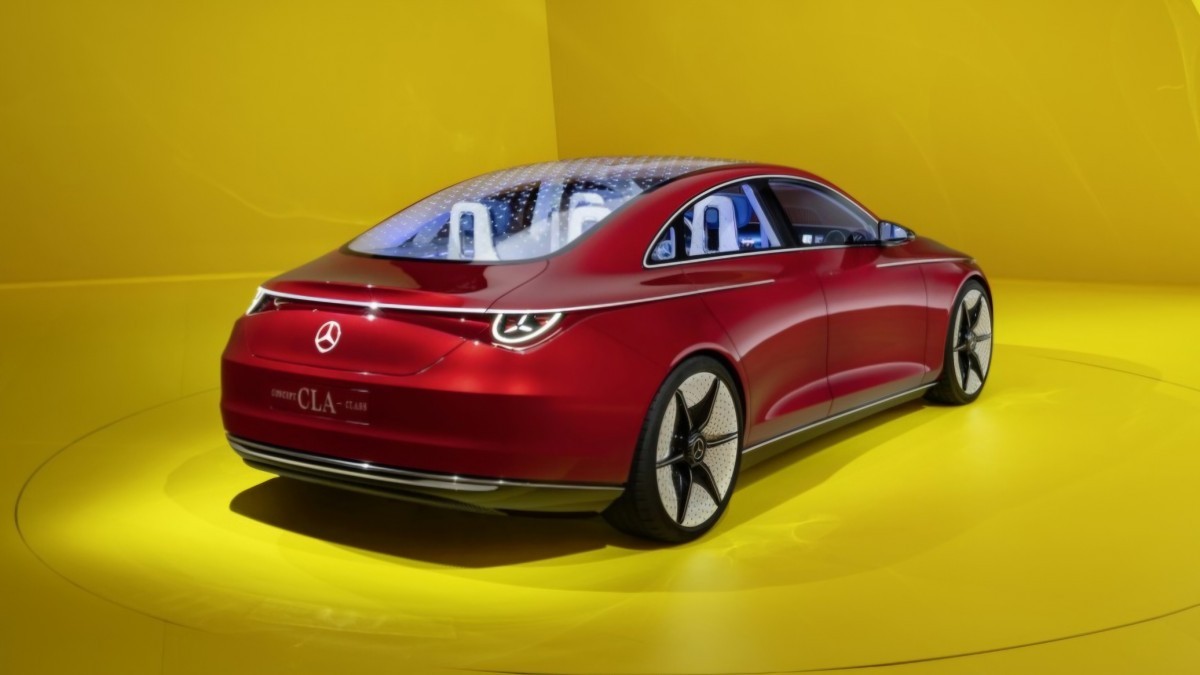Mercedes-Benz teases the innovative tech that will go in the new CLA
The upcoming release of the Mercedes-Benz CLA is shaping up to be quite an event. The all-new electric vehicle from the German automaker promises to redefine efficiency and performance. And while we hear promises like that pretty much with every new EV, the CLA's innovative powertrain technology and flexible charging system have us intrigued.
There is no doubt Mercedes-Benz has set a high bar for the CLA. They are aiming for an impressive efficiency target of 12 kWh/100 km (5.2 mi/kWh). This outguns most EVs currently on the market, including even the Lucid Air Pure. The CLA's remarkable efficiency is credited to Mercedes' new compact EDU 2.0 electric motor. It's a key component of the Mercedes Modular Architecture (MMA) platform designed for future electric vehicles. This rear-axle motor delivers 200 kW of power, with all-wheel drive models using an additional 80 kW unit on the front axle. A two-speed transmission improves efficiency at both high and low speeds.

The CLA uses an air-to-air heat pump to maximize efficiency by capturing heat from the motor, battery, and ambient air to warm the cabin. While electric powertrains generate less waste heat than traditional internal combustion engines, this clever heat pump ensures optimal thermal management for passenger comfort.
Mercedes-Benz will offer the CLA with two battery options, each featuring distinct chemistries. The larger 85 kWh battery has a silicon oxide in the anode for higher energy density. This technology was pioneered by Sila Nanotechnologies (Mercedes is a significant investor). This battery is projected to deliver an impressive 466 miles of WLTP range, although EPA estimates are expected to be in excess of 300 miles.

The smaller 58 kWh battery uses lithium iron phosphate (LFP) chemistry, known for its cost-effectiveness, durability, and simplified mineral sourcing. The trade-off for LFP batteries is their slower charging and cold weather performance compared to other chemistries.
The CLA supports up to 320 kW charging, in part thanks to its 800V architecture. Mercedes claims that the larger battery can add 186 miles of range in just 10 minutes. The car features a broad charging curve, ensuring high charge rates in various battery conditions.

This impressive charging technology has already been put to the test. Mercedes set a record at the Nardo test track in Italy. A pre-production CLA covered 2,310 miles in 24 hours and maintained an average speed of 96 mph, including charging time.
Mercedes has devised a unique solution for the CLA to address the evolving landscape of charging standards. When many automakers are transitioning to the North American Charging Standard (NACS), Mercedes will equip the CLA with both CCS and NACS ports.
Mercedes has indicated that future entry-level models will offer bidirectional charging, although it remains unclear whether this functionality will be available in the initial CLA release.
Reader comments
- Anonymous
- M}5
Maybe :-) But this is and was also usually the case with ICE cars (in local dealerships).
- Anonymous
- M}5
This is not the case in Germany. Many EV-producers (BMW, Tesla etc.) give big incentives to promote sales, because the EV-Government-Discount has been discontinued in Germany. Often these cars are cheaper than an ICE car with similar level of equipme...




Facebook
Twitter
Instagram
RSS
Settings
Log in I forgot my password Sign up